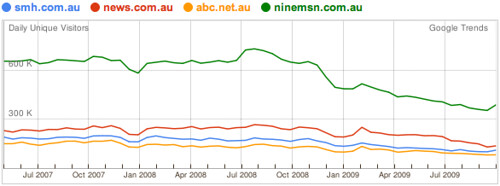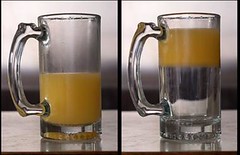If you are involved in creating digital strategy or working with social media from a professional point of view, you are bound to hear the word “influence” bandied about. Maybe you have been asked to work up an influencer outreach program for a new product. Perhaps you are thinking about commissioning an influencer engagement strategy to help you tap into the pot of gold that the social graph represents. Whatever your reasons, consider this first …
What if "Influencers" don’t even exist?
Instead, what if we have confused celebrities in this WoM induced hysteria around Influencers?
In F*ck Influencers (or Influencing Conversations), Sean Howard teases out some interesting questions in relation to influencers and their perceived role in spreading a message or story. It starts with a focus around blogs and outreach, but quickly moves beyond that. Take a few minutes to read his post if you have not seen it yet. He rounds it out with a number of questions:
Why do people share links or retweet on platforms like Twitter?
What types of things do people share and for what benefit?
How does how people see their networks affect their decisions on what to share?
To me, some of the questions pointed towards the Auchterlonie Effect, but on second thought, I realised that what needs to be understood is not the effect (or transmission) of story but the underlying behaviour which triggers its contagion across a network.
It is not necessarily about connecting to the most people, but connecting to the most people who can derive benefit by interacting with you. You see, it is not about YOU creating value for people (by creating content, linking etc), but people FINDING value in what you do create …
Every time we forward on a link, retweet a message read on Twitter or any other type of social network interaction, we are CHOOSING to act. We are not just using our network of connections to FILTER the noise, we are using it to SHAPE our experience. It is a choice. And understanding this distinction places us in a context where STORYTELLING emerges as vitally important?
Fundamentally, my view is that ideas don’t spread through networks but through people. And, anyway, it seems we are just substituting the word “publisher” with the word “influencer” – without clearly understanding the fundamental changes that have already taken place in the socially networked world. The challenge for marketers is to find those who are open to sharing the message, the idea or story that they receive from someone that they are connected to. This is where the Auchterlonie Effect does have a role.
Of course, this would all make more sense if there was hard data available!
Mark Earls comes to the rescue by highlighting this lecture by Stanford’s Eric Sun, whose new research on influence is investigated with particular reference to Facebook. Far from confirming the idea of the importance of single point influencers in the instigation of “viral” or contagious content (as per Gladwell’s Tipping Point), the data indicates instead that these effects occur much more closely in line with the theories of Duncan Watts.
The research was structured around “dispersion chains” – the length of connections through which a message, story etc would travel across a cluster of connections. Sun’s research started with a number of expectations regarding the length of dispersion. It was expected that the following would produce longer dispersion chains:
- Those with more experience using Facebook
- Those with more activity on Facebook
- Those with more Friends on Facebook
Interestingly when we think of “influencers” within a social networking context, we do think in terms of sheer numbers. We think of activity and engagement. And we think of those with “rankings” which generally indicate longevity, not necessarily velocity. Sun’s research indicated that “the user’s number of friends is not really meaningful”.
When Sun’s data was clustered by activity it was shown that almost 75% of Fans of a particular Fan page sit within an initial grouping – that they are already connected. Importantly, the instigators account for about 15% of this cluster. That is, contagion starts not with one, but with multiple points of connection – indicating again that “influence” is more closely related to action – with “doing” or “participation” than “telling” and dispersion. It’s more about behaviour – and for behaviour to become contagious, it has to operate within a trusted environment.
This is what really fascinates me. If influence does not influence, then the focus for marketers must necessarily shift. We need to be thinking networks of trust – and this is not something we can “break into” or “interrupt”. We need to be invited in. And that is a whole new ball game – that we may not yet be ready for.
For more thinking on this, take a look at Andreas Weigend’s open wiki on data mining and ecommerce – especially the section on Facebook and trust.





